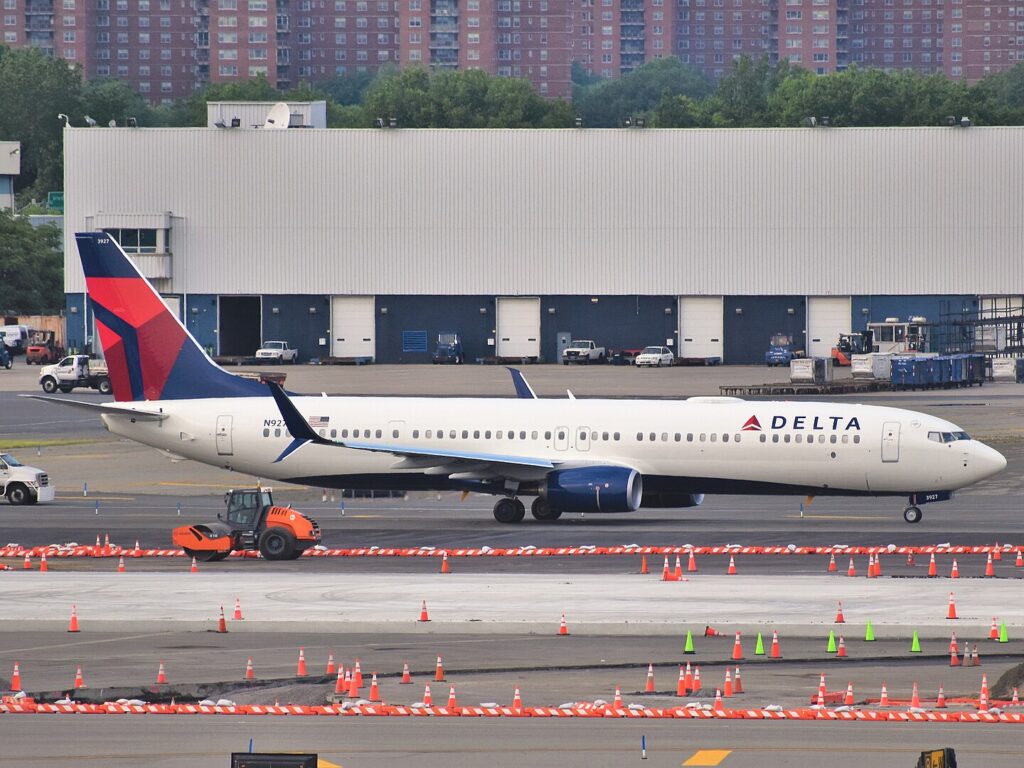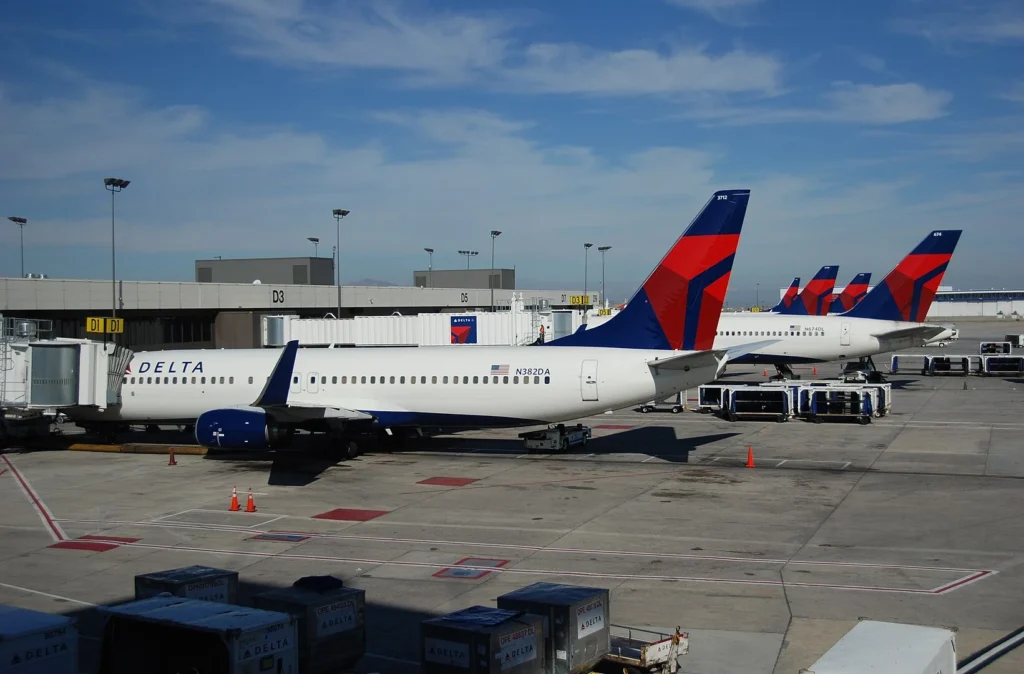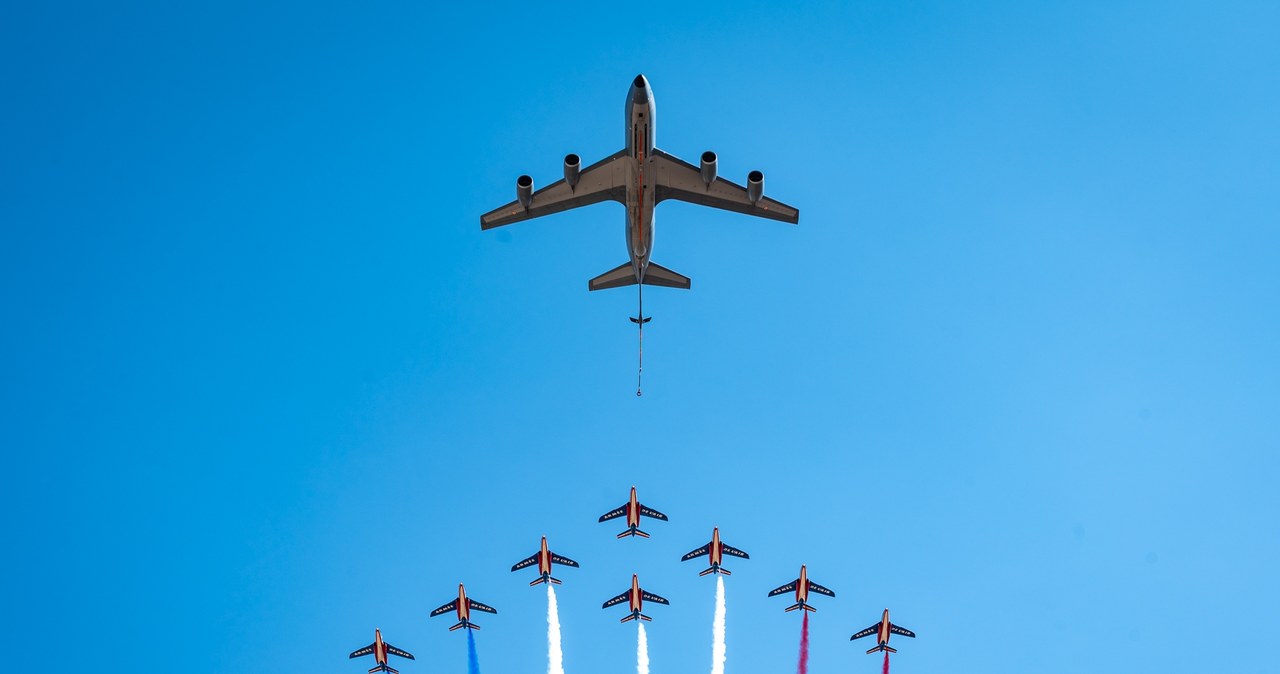
MEXICO CITY- A Delta Air Lines (DL) pilot and Mexico City International Airport (MEX) air traffic controller engaged in a tense exchange during a pressurization emergency on April 7, 2025.
The incident involved Delta flight DL576, operated by a Boeing 737-800, which was unable to climb above 10,000 feet after departing MEX for Atlanta (ATL).
 Photo: By Adam Moreira (AEMoreira042281) – Own work, CC BY-SA 4.0, https://commons.wikimedia.org/w/index.php?curid=79819656
Photo: By Adam Moreira (AEMoreira042281) – Own work, CC BY-SA 4.0, https://commons.wikimedia.org/w/index.php?curid=79819656Delta Pilot and ATC Argument
Communication challenges escalated as the pilots attempted to work through checklists while requesting vectors to avoid terrain.
The high-altitude location of Mexico City Airport (7,300 feet) significantly complicated the situation, leaving minimal vertical space for the aircraft experiencing pressurization issues, OMAAT flagged.
The incident highlights the critical importance of clear communication during aviation emergencies. Flight DL576, operating with a 24-year-old Boeing 737-800 (registration N399DA), took off at 12:27 PM local time but immediately encountered pressurization problems that prevented it from climbing to normal cruising altitude.
The miscommunication began when Delta pilots declared an emergency and requested “vectors back to the airfield” but then clarified they weren’t ready to return immediately.
Instead, they needed time to complete essential checklists while avoiding mountainous terrain. This request created confusion for the controller, who repeatedly attempted to direct the aircraft back for landing.
ALSO READ: JetBlue Pilot Calls New York JFK ATC to Do His Job Properly
A post shared by Content Creator (@flightsimulatorfantasy)
Several key factors contributed to the communication breakdown:
- Terminology issues – The pilots used “declaring an emergency” rather than the internationally recognized “mayday, mayday, mayday” protocol
- Ambiguous requests – Asking for “vectors back to the airfield” suggested immediate return intentions
- Incomplete information sharing – The pilots didn’t clearly articulate their need to hold while working through procedures
- Altitude constraints – The high elevation of MEX (7,300 feet) combined with surrounding terrain created significant challenges
 Photo: BriYYZ | Flickr
Photo: BriYYZ | FlickrOperational Challenges
Mexico City International Airport’s elevation introduces unique operational considerations that complicated this emergency. At 7,300 feet above sea level, MEX is one of the highest major international airports globally, with surrounding mountains further restricting available airspace.
For an aircraft limited to 10,000 feet due to pressurization issues, this left less than 3,000 feet of usable vertical space—a particularly challenging situation during an emergency. The controller’s insistence on immediate landing instructions may have stemmed from these geographic constraints and safety concerns.
The aircraft successfully landed back at MEX 53 minutes after departure with no reported injuries. While the outcome was ultimately safe, the incident has sparked discussion about international communication protocols and emergency procedures when operating in challenging environments.
 Photo: By Aero Icarus from Zürich, Switzerland – Delta Air Lines Boeing 737-800; N382DA@SLC;09.10.2011/621cp, CC BY-SA 2.0, https://commons.wikimedia.org/w/index.php?curid=26713161
Photo: By Aero Icarus from Zürich, Switzerland – Delta Air Lines Boeing 737-800; N382DA@SLC;09.10.2011/621cp, CC BY-SA 2.0, https://commons.wikimedia.org/w/index.php?curid=26713161Lessons for Aviation Communication
This incident provides valuable insights for improving pilot-ATC interactions during emergencies:
- Clear, concise communication using standardized international terminology is essential
- Pilots should explicitly state their intentions and needs during emergencies
- Controllers need to remain flexible during emergency situations while ensuring safety
- Cultural and language differences can create additional communication barriers
- High-workload environments require extra attention to communication clarity
Both parties share responsibility in this situation. The controller could have been more accommodating to an aircraft declaring an emergency, while the pilots could have more precisely communicated their needs and intentions from the outset.
Stay tuned with us. Further, follow us on social media for the latest updates.
Join us on Telegram Group for the Latest Aviation Updates. Subsequently, follow us on Google News
American Airlines Boeing 777 Pilot Scolded By Delhi ATC During Taxiing
The post Delta Pilot Involved in Argument with ATC During Emergency appeared first on Aviation A2Z.






